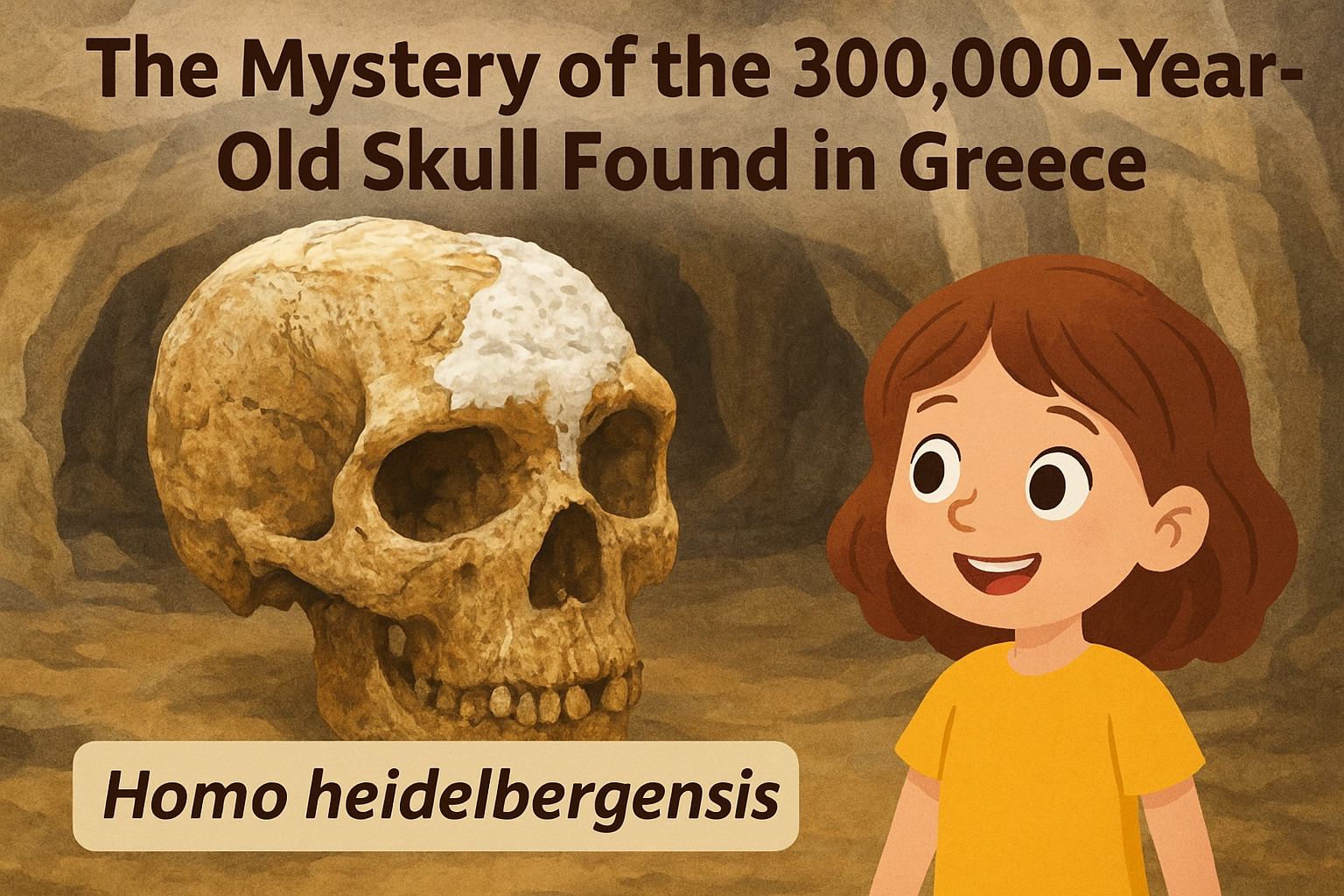
Hello young explorers!
Have you ever wondered what ancient humans looked like or how they lived? Well, scientists have recently uncovered a fascinating discovery that takes us back in time—way back!
What Was Found?
In 1960, a group of scientists discovered a mysterious skull in a cave called Petralona Cave in northern Greece. This wasn't just any skull; it was special because it had been attached to the cave wall by a mineral called calcite, which formed over thousands of years.
For many years, researchers debated who this skull belonged to. Was it from an early human? A Neanderthal? Or perhaps a completely different species?
The Big Reveal
Using a special dating technique called uranium-thorium dating, scientists were able to determine the age of the skull. They found that it is at least 286,000 years old! This means the person who owned this skull lived during a time when early humans were just beginning to evolve.
After studying its features, scientists concluded that the skull likely belonged to a species called Homo heidelbergensis. This species is different from both Neanderthals and modern humans (Homo sapiens). They lived in Europe between 300,000 and 600,000 years ago, making this an important Homo heidelbergensis discovery that helps scientists learn more about our ancestors.
Why Is This Important?
This discovery is significant because it helps scientists understand more about human evolution. By studying ancient remains like the Homo heidelbergensis fossil, researchers can learn how early humans lived, what they looked like, and how they evolved over time.
It also shows us that our ancestors were diverse and lived in different parts of the world, each adapting to their environment in unique ways.
Fun Fact
Did you know that Homo heidelbergensis is believed to have been the first species to hunt large animals and build shelters? They were quite advanced for their time!
Time Period of Homo heidelbergensis
The Homo heidelbergensis time period stretched from about 600,000 to 300,000 years ago. They were some of the earliest human-like creatures and are considered a key part of the human family tree. Scientists believe they may have been ancestors of both Neanderthals and modern humans!
Final Words
The discovery of this Homo heidelbergensis skull in Greece is a remarkable piece of the puzzle in understanding human history. It reminds us that science is always uncovering new information about our past, and there's still so much more to learn.
So, the next time you read about an ancient discovery, remember that you're peering into the fascinating story of how humans came to be!
Stay curious and keep exploring!
Special Words You Should Know
Homo heidelbergensis
- Pronounced: “HO-mo hy-del-berg-en-sis”
- Meaning: A species of early humans that lived in Europe between 600,000 and 300,000 years ago. They are thought to be ancestors of Neanderthals and modern humans.
Fossil
- Pronounced: “FAH-sil”
- Meaning: The remains or imprint of a plant or animal that lived a long time ago, preserved in rock or soil.
Calcite
- Pronounced: “KAL-sight”
- Meaning: A type of mineral that often forms crystals and can cover objects like bones over time.
Dating Technique
- Pronounced: “DAY-ting tek-neek”
- Meaning: A method scientists use to figure out how old something is, like a fossil or rock.
Evolution
- Pronounced: “ev-uh-LOO-shun”
- Meaning: The process through which living things change and develop over time.






